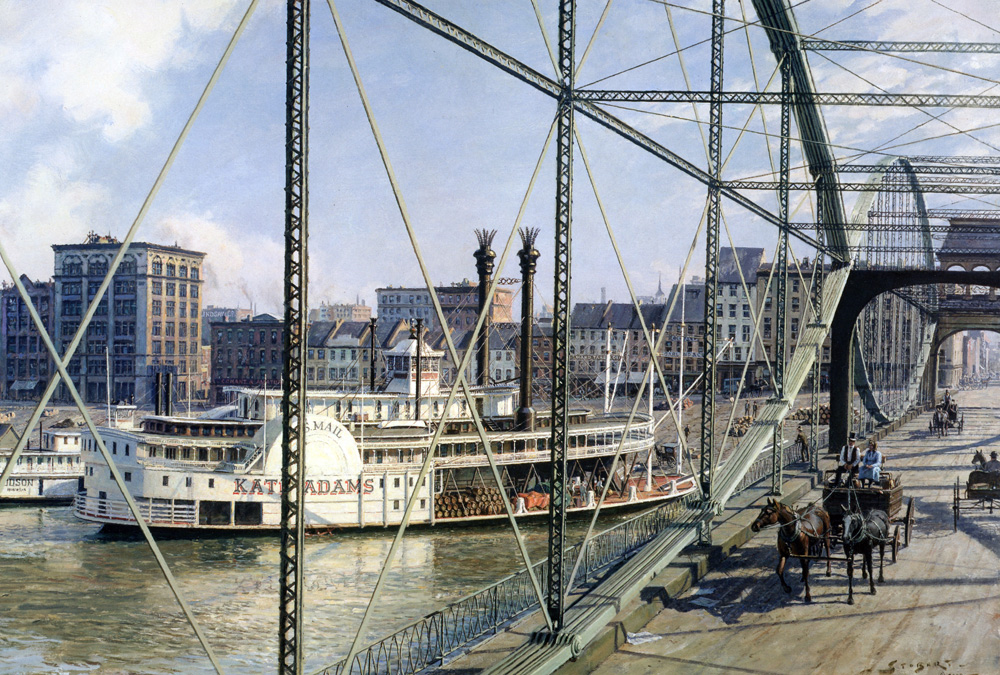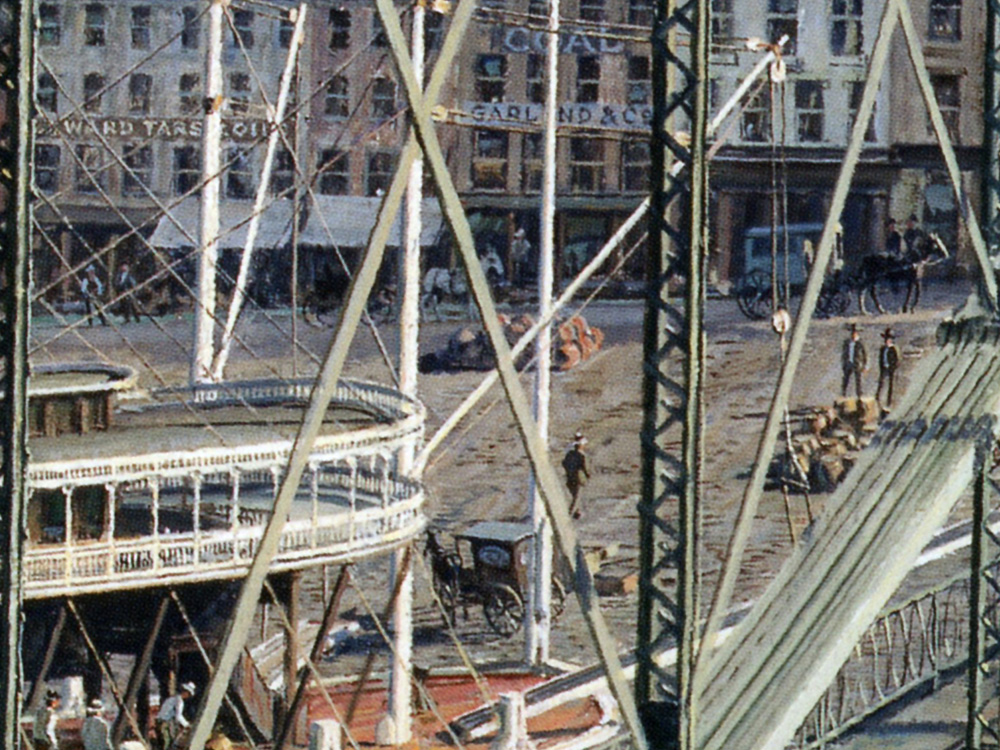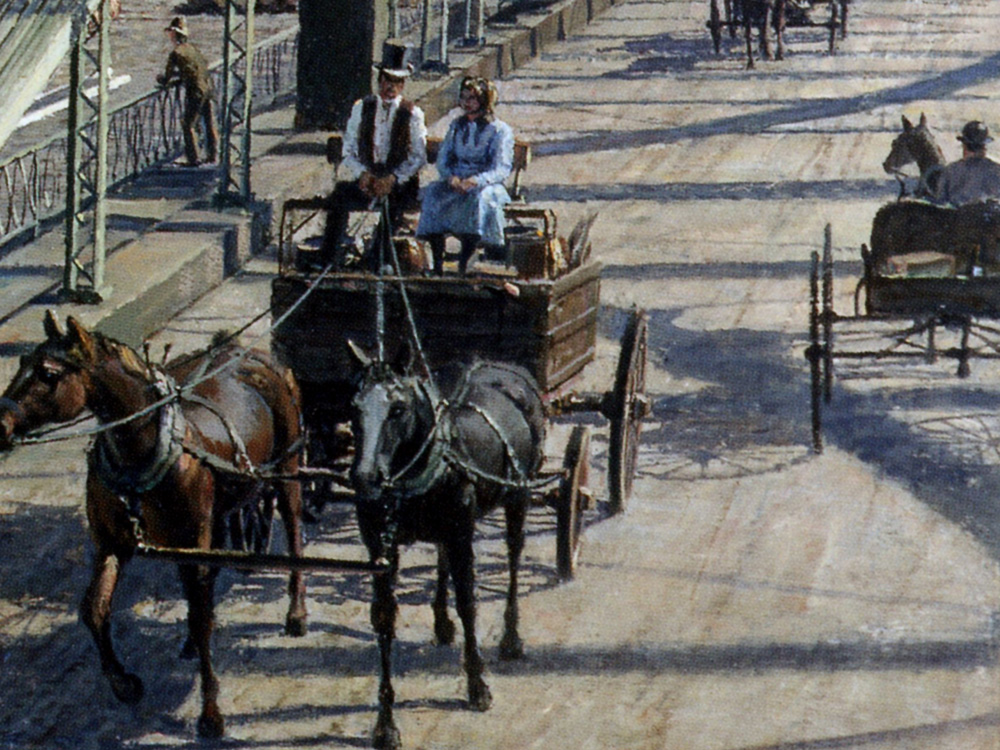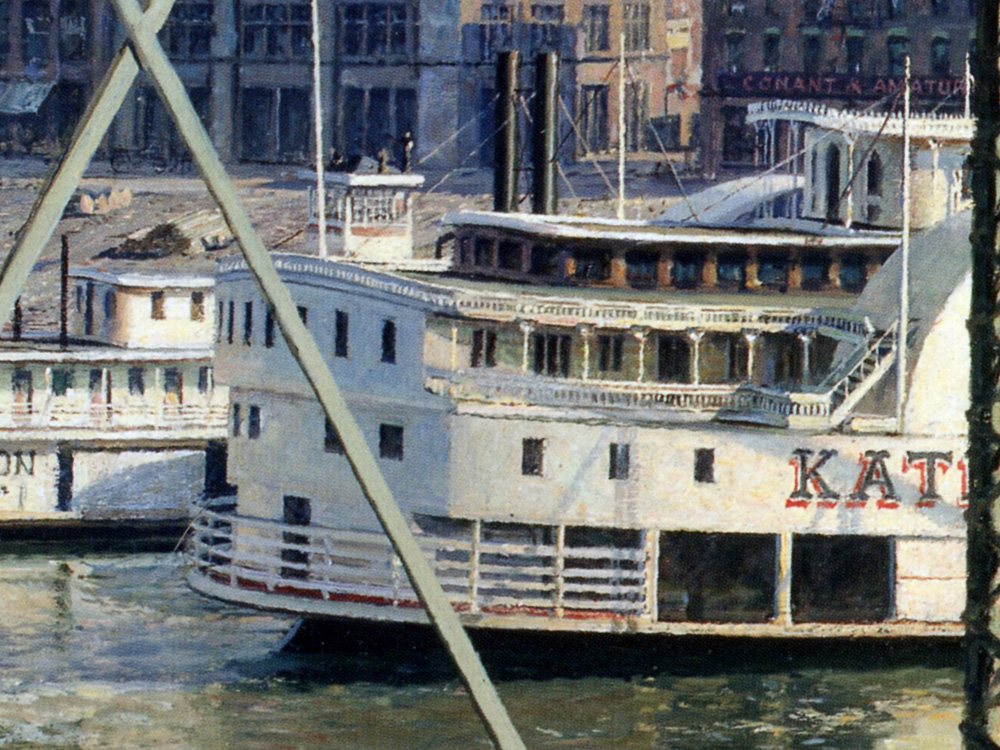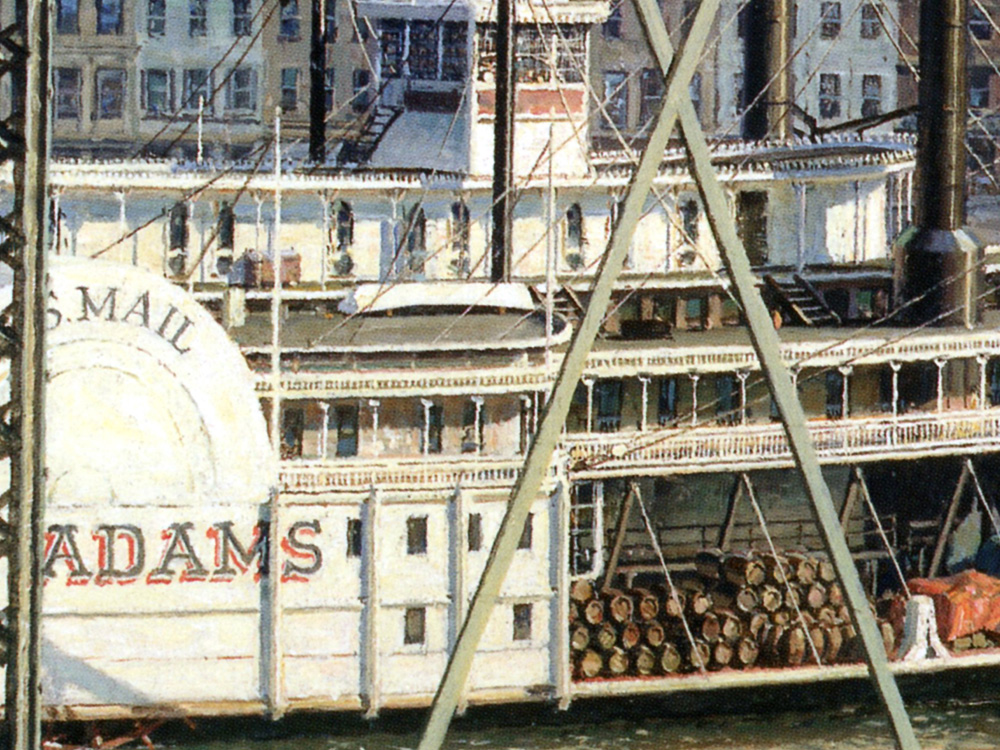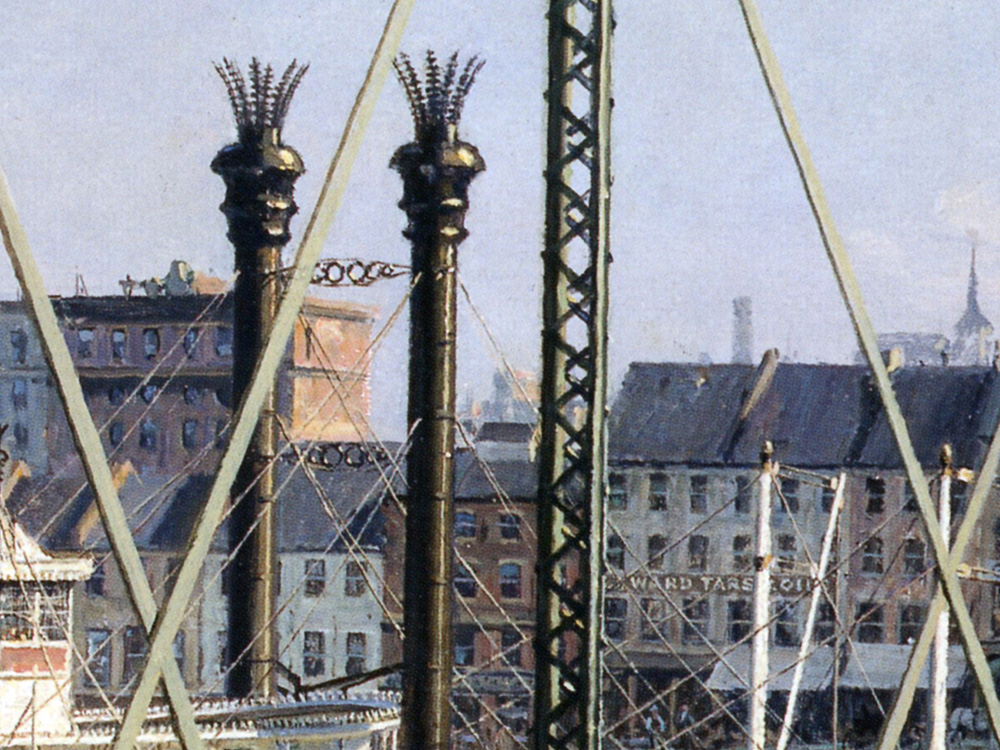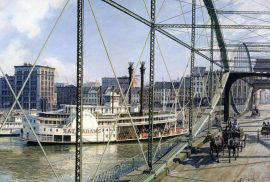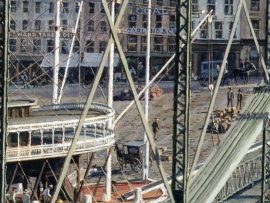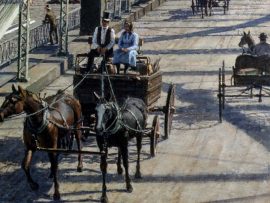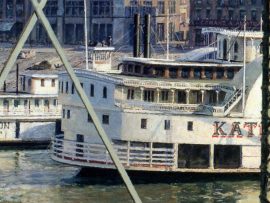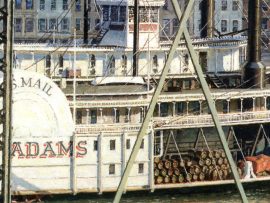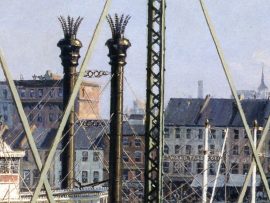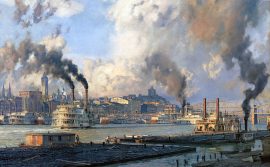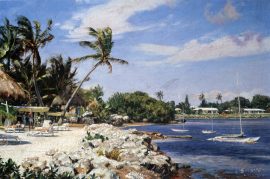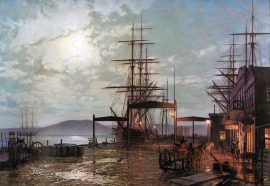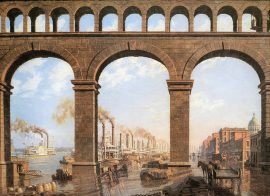Pittsburgh: The Monongahela Wharf Seen from Smithfield Street Bridge, 1883
$500.00
At the zenith of the steamboat era, prior to the advent of the internal combustion engine, the Monongahela Wharf at the location of the Monongahela Hotel was the hub of commercial Pittsburgh. It was head of navigation for the taller stacked boats, and therefore terminus for the larger packets like the “America” and “Kate Adams.”
The view shows the 2nd of the four boats named “Kate Adams” at the busy landing in front of the Monongahela Hotel seen from a viewpoint above the deck of the Smithfield Street Bridge. The vessel is shown about to leave on the delivery trip to her owners, the Memphis and Arkansas City Packet Co., Memphis, Tennessee.
This virtual floating palace, configured as a cotton boat, was built twelve miles down the Ohio at the Sewickley boat yard with her machinery installed by James Rees & Sons Co. at Pittsburgh. During the nineteenth century the abundance of hard timber in the Allegheny foothills of Western Pennsylvania and the iron and steel shops in the Pittsburgh area had inspired a sizable boat building industry along the upper Ohio and Monongahela Rivers.
The wide lower deck of the Kate Adams was designed to carry over a thousand bales of cotton during the harvest season and on the second deck the passenger accommodations were luxurious with her interior finished in ash, walnut, cherry, bird's-eye maple and mahogany. The sternwheel boat at the left is the upper Ohio River packet “Hudson.” Sternwheel boats were economical to operate and well suited to the upper Ohio River trade where frequent landings at small villages and farms were required.
The location of this scene was, in 1919, the site of the first bridge in the new town of Pittsburgh. A covered bridge was then built across the Monongahela at this point to connect the growing city with the south side, but was destroyed in the great fire of April 10, 1845. It was replaced in 1846 by a multiple span suspension bridge which was one of the first to be designed by John Roebling. But soon to be outgrown, this narrow bridge was replaced in 1861 by a unique design known as a lenticular span, sometimes, though rarely, used in railroad bridges.
| Weight | 6.00 lbs |
|---|---|
| Catalog: | Stobart-127 |
| Artist: | John Stobart |
| Dimensions: | 20 1/2" x 31" |
| Edition: | 500 |

